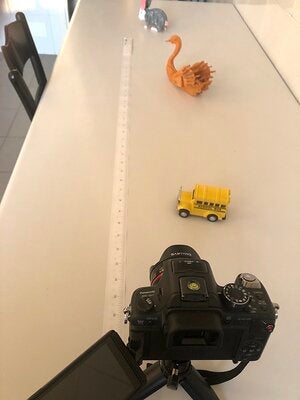jk4u59
Mu-43 Regular
Hello all,
I have a question that puzzles me, because I wasn't able to find an explanation: I recently decided to have my previous mirrorless (a Lumix GH1) converted to infrared, to give it a "second life" instead of leaving it collecting dust on a shelf. So, its IRcut filter that avoids the sensor being hit by infrared radiation has been replaced with a 720 nm filter that, on the contrary, allows (almost) only IR to reach the sensor.
I had the converted camera back from the repairing lab just some days ago, and I'm now testing this new configuration, trying all my lenses (I read that some of them might produce hot spots when working in IR). Well, instead of any hot spot, I discovered an unexpected behavior: my (fully manual) Samyang 7.5mm fisheye does not focus properly! At least, it cannot focus at infinitive, resulting almost useless. So my question is, why? I made several other tests:
Please check the (downsized) attachments:
Ivan (Milan, Italy)
I have a question that puzzles me, because I wasn't able to find an explanation: I recently decided to have my previous mirrorless (a Lumix GH1) converted to infrared, to give it a "second life" instead of leaving it collecting dust on a shelf. So, its IRcut filter that avoids the sensor being hit by infrared radiation has been replaced with a 720 nm filter that, on the contrary, allows (almost) only IR to reach the sensor.
I had the converted camera back from the repairing lab just some days ago, and I'm now testing this new configuration, trying all my lenses (I read that some of them might produce hot spots when working in IR). Well, instead of any hot spot, I discovered an unexpected behavior: my (fully manual) Samyang 7.5mm fisheye does not focus properly! At least, it cannot focus at infinitive, resulting almost useless. So my question is, why? I made several other tests:
- I tried to mount again the fisheye on my current camera (OM-D E-M5 Mk.II): it stil works perfectly (note that, before the IR conversion, I used many times this lens on the GH1 to make several 360° panoramas, without any problem)
- All the AF lenses I have work well also on the IR-converted body
- I mounted the old Zuiko OM 50mm with its M4:3 adapter on the GH1, focusing an object at about 1 m distance, then I passed it on the OM-D without moving at all the focusing helicoid and checked the focus from the same position as before: the object was slightly out of focus!
Please check the (downsized) attachments:
- "Fisheye_7.5" is clearly blurred
- "VarioG_14-42" is fine (I also did some postprocessing on it)
Ivan (Milan, Italy)







